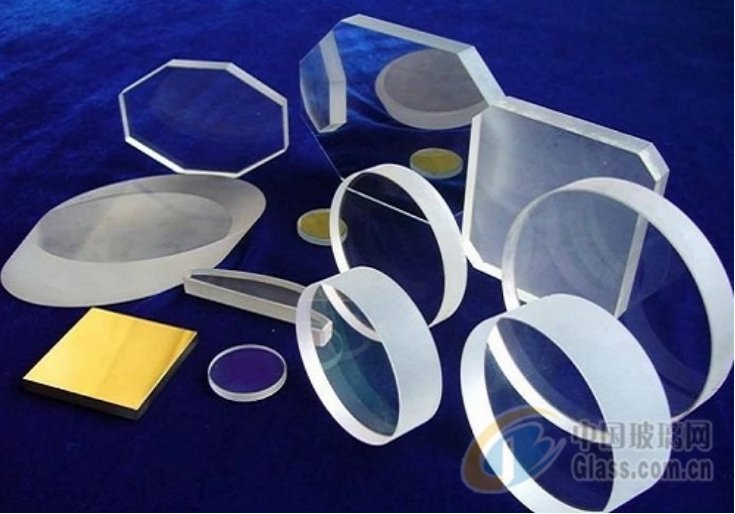
Optical glass is an important part of optical materials, widely used in digital cameras, projection equipment, astronomy, national defense, aerospace, industry and other fields. In the whole year of 2023, China's optical glass market is expected to reach 3.76 billion yuan, an increase of 12.6%. This paper analyzes the current situation of China's optical glass industry from the aspects of optical glass types, applications, production, consumption, import and export, and competition pattern, and points out the main challenges facing the industry, including insufficient technological innovation capacity, increasing pressure on environmental protection, and international trade friction.
Optical glass is the main material for manufacturing optical lenses and optical instruments. The main difference between optical glass and ordinary glass is that optical glass has a high degree of transparency, a high degree of physical and chemical uniformity, and a specific and precise optical constant. Optical glass can be divided into colorless optical glass, colored optical glass, anti-radiation optical glass, anti-radiation optical glass, ultraviolet and infrared optical glass, optical quartz glass and so on.
1. the application of optical glass
The application of optical glass originated earlier. By 3000 AD, people in Egypt and China (the Warring States period) could make glass. But glass as glasses and mirrors began in Venice in the 13th century. Since the 16th century, due to the development of astronomers and navigation needs, Galileo, Newton, Descartes and other glass made telescopes and microscopes.
In the 21st century, optical glass is mainly used in the manufacture of optical instruments or mechanical systems of lenses, prisms, mirrors, Windows, etc., and is widely used in digital cameras, projection equipment, astronomy, national defense, aerospace, industry and other fields.
According to the data of the consulting company group, the annual market size of China's optical instruments is expected to reach 270 billion yuan in 2023, of which the digital camera market size is about 50 billion yuan, the projection equipment market size is about 30 billion yuan, the astronomical instrument market size is about 10 billion yuan, and the national defense and space instrument market size is about 80 billion yuan. The industrial instrument market is about 100 billion yuan.
In 2023, the demand for optical glass for all kinds of optical instruments in China is expected to reach 450 million square meters, of which the demand for digital cameras is about 80 million square meters, the demand for projection equipment is about 50 million square meters, the demand for astronomical instruments is about 0.1 million square meters, and the demand for national defense and aerospace instruments is about 150 million square meters. The demand for industrial instruments is about 160 million square meters.
2. the consumption of optical glass
China is the world's largest consumer of optical glass, the main consumption areas for digital cameras, projection equipment, astronomy, national defense, aerospace, industry and so on. According to data from the consulting company Group, the annual consumption of optical glass in China is expected to reach 430 million square meters in 2023, an increase of 11.7%. Among them, the consumption of digital cameras is about 0.75 million square meters, accounting for 17.4%, the consumption of projection equipment is about 45 million square meters, accounting for 10.5%, the consumption of astronomical instruments is about 0.1 million square meters, accounting for 2.3%, and the consumption of national defense and space instruments is about 140 million square meters, accounting for 32.6%. The consumption of industrial instruments is about 160 million square meters, accounting for 37.2%.
According to the data of the consulting company group, the market size of China's optical glass is expected to reach 3.76 billion yuan in 2023, an increase of 12.6%. Among them, the market size of colorless optical glass is about 2.5 billion yuan, accounting for 66.5%, the market size of colored optical glass is about 500 million yuan, accounting for 13.3%, the market size of anti-irradiation and radiation resistant optical glass is about 300 million yuan, accounting for 8%, and the market size of ultraviolet and infrared optical glass is about 200 million yuan, accounting for 5.3%. The market size of optical quartz glass is about 200 million yuan, accounting for 5.3%.
Dealing with international trade frictions. China's optical glass industry should deal with international trade frictions, mainly including the following aspects: first, strengthen international cooperation, actively participate in international organizations and mechanisms, and maintain the multilateral trading system; Second, abide by international rules, make reasonable use of international trade remedy measures, and safeguard their legitimate rights and interests; The third is to enhance the international competitiveness, improve the technical content and added value of products, and enhance the market attractiveness of products; The fourth is to establish an international image, strengthen brand building and publicity, and improve product visibility and credibility.
